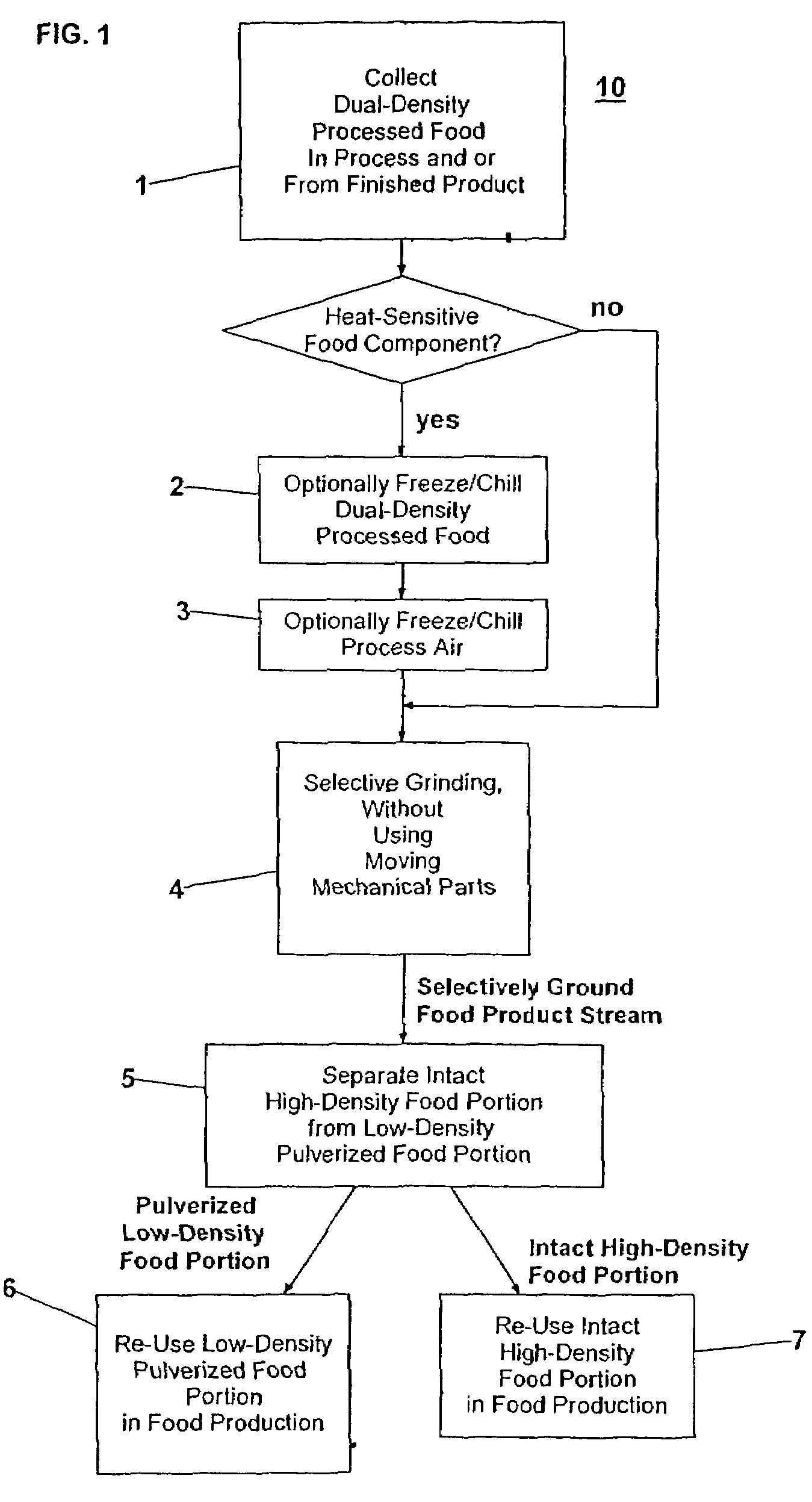Process for selective grinding and recovery of dual-density foods
a dual-density, food technology, applied in the field of processing components of dual-density processed foods, can solve the problems of difficult re-use small quantities of processed food products that may not conform to a desired shape or configuration, and difficult re-processing of dual-density baked goods, etc., to facilitate separation and discharge, reduce or eliminate the cost of transporting and disposing of food materials, and facilitate cleaning
- Summary
- Abstract
- Description
- Claims
- Application Information
AI Technical Summary
Benefits of technology
Problems solved by technology
Method used
Image
Examples
example 1
[0064]Nabisco Chips® Ahoy! chocolate chip cookies (approx. 3 wt. % moisture) were fed into a WINDHEXE apparatus for circular vortex air-flow material grinding. The WINDHEXE apparatus was manufactured by Vortex Dehydration Systems, LLC, Hanover, Md., U.S.A. The basic configuration of that type of apparatus is described in U.S. patent application publication no. 2002 / 0027173 A1, and reference is made thereto. The process unit had two inlet ports equidistantly spaced around the upper portion of the apparatus through which the compressed air stream was concurrently introduced in a counter-clockwise direction.
[0065]A three-foot diameter WINDHEXE apparatus was tested. The diameter size refers to the chamber size of the enclosure into which air and dual-density processed food introductions were made. The conditions of this experiment are described below. The feed rate of the cookies was set for an approximate discharge of five pounds solid product per minute, and approximately 65 pounds of...
example 2
[0068]Nabisco Chips® Ahoy! chocolate chip cookies (approx. 3 wt. % moisture) were fed into a WINDHEXE apparatus for circular vortex air-flow material grinding using equipment an under conditions similar to Example 1. The cyclone enclosure was left open to the atmosphere at its lower end where granular product was discharged (i.e., no rotary valve or similar mechanism was installed on the lower end of the cyclone). The granular product was sieved as in Example 1 to separate intact chocolate chips from the ground base cake obtained. Several batches of chocolate chip cookies were prepared which contained varying respective proportions of the ground base cake (i.e., “meal rework”) and / or intact chocolate chips (i.e., “chip rework”) recovered from the above-described vortex processing, as re-work in additional chocolate cookie production.
[0069]As a control run (Batch C1), a chocolate cookie dough containing no meal rework nor chip rework was prepared. This dough was prepared in a convent...
PUM
 Login to View More
Login to View More Abstract
Description
Claims
Application Information
 Login to View More
Login to View More - R&D
- Intellectual Property
- Life Sciences
- Materials
- Tech Scout
- Unparalleled Data Quality
- Higher Quality Content
- 60% Fewer Hallucinations
Browse by: Latest US Patents, China's latest patents, Technical Efficacy Thesaurus, Application Domain, Technology Topic, Popular Technical Reports.
© 2025 PatSnap. All rights reserved.Legal|Privacy policy|Modern Slavery Act Transparency Statement|Sitemap|About US| Contact US: help@patsnap.com



